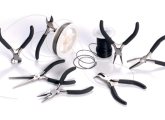Research last year found that careers advice received at school is too often neither relevant nor at a pace with young people’s demands. In many cases it’s outdated, relies on stereotypes and hasn’t adapted to the changing world. New jobs are emerging all the time and there are opportunities on the horizon that weren’t there just a few years ago.
Thankfully careers help for schools is plentiful and there are a number of careers software programs available to support students in making sense of those arrows and road signs. A new and very exciting resource that really is worth knowing about comes from U-Explore, with the company’s fantastic careers software called Start. It’s a bit of a head-turner – and what’s more, it’s free.
Match reports
As soon as students have registered and created an account they have the whole world in their hands. From the homepage students can personalise their profile with important particulars about their skills, qualities, interests and work preferences and Start will create job suggestions corresponding to their personality. They will then be able to map an educational pathway to their dream career. This best match, self-inventory approach is like online dating or a colour profiling test, but for jobs.
There is a search box within the program that can be used to navigate straight to jobs that interest young people, or find ideas based on a key word search. Results will take users to a page of job profiles; these will ordered by relevance and there is an option to display by suitability based on the user’s profile. All job profiles provide comprehensive information to help users get inside a particular role, understand how they could move into the career, and whether their profile matches them as appropriate for the job. If they wish, students can explore careers independently of completing their profile – there are 1700 job profiles to investigate, which contain an impressive amount of data from top tips and labour market information to apprenticeship vacancies and icould videos.
Students can also find out about all the qualifications available to them either mapped to the jobs which interest them or within a devoted area divided into academic and vocational sections. All they need do is select a qualification from a list, read more and view the full list of subject they might study. There are also interactive maps to help students find courses and providers.
Students need reliable, professional information, solid support and up to date guidance that will empower them to make educated and assured decisions about their future. Start provides this, and helps young people understand that a job is the most valuable asset they will ever have and that developing a livelihood that’s rewarding in every sense of the world needs careful planning. Start is about more than jobs – it’s about helping young people begin to decide what kind of life they want and clarify their place in their world.
New directions
Start can be accessed on a range of devices both in and away from school. To help teachers, Start comes with a very useful Key Stage checklist which provides an ‘at-aglance’ guide for using the software from Year 7 to Year 13, and there is a marvellous activity pack available packed with engaging activities. These are 20 minutes to an hour long, with each Key Stage following three themes: Who am I? What’s out there? and How to get there. Resources are accessed through Track Lite (an area for teacher users in Start) which also contains an overview of student usage data and the option to upgrade to access even more reports which have been built with the statutory guidance for careers and Ofsted expectations in mind.
The website is slick and sophisticated under the bonnet but it has been kept extremely user-friendly on the outside so that it is appealing to look at and simple to explore without getting confused or lost. A very useful feature is the dyslexia mode, whereby at the foot of every page you can turn on a function replacing the font used with OpenDyslexic. In this mode the font changes so that letters have weighted bottoms to help dyslexic users recognise direction.
Start provides young people with the opportunity to access the most up-to-date advice and support there is for discovering, reflecting, exploring and mapping their future. It will help students get their bearings, identify their strengths, target a work sector and plan a path to get there with focus and ambition.









